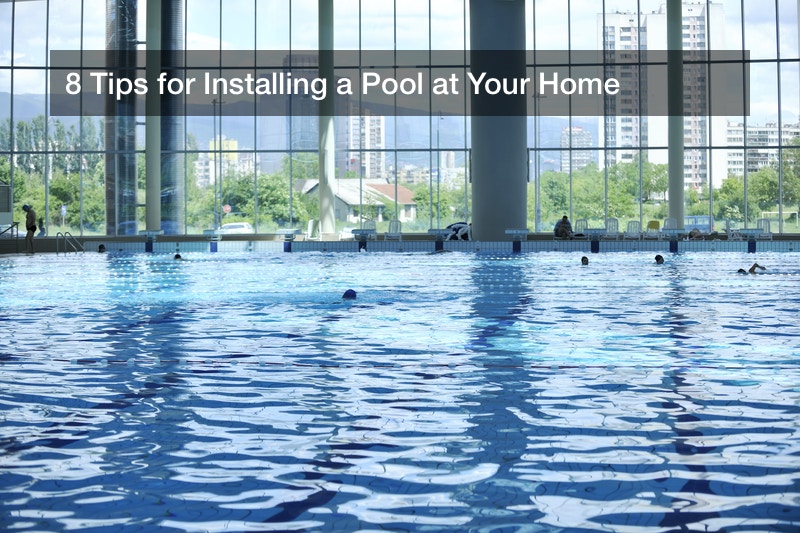
It makes sense that we all feel the safest in our own homes; they are the spaces we know most. We have all the things that we want in our homes: our bed, the couch and TV that we know well, and all the amenities that we deem necessary for our daily lives. This is often the cause of people’s surprise when they realize how many hidden dangers lie dormant in our homes. If you’re the parent or guardian of a young child, mitigating risks around your house is especially important.
The harsh reality of it is, our homes are dangerous. And if you’re not aware of the possible danger in your home, by nature, they become more dangerous. So, what is a homeowner or renter to do? First and foremost, it’s time to educate yourself on the main common household dangers that you may be unaware of.
Now is a better time than any to take a hard look at your house as the COVID-19 crisis has brought us all into our homes more than usual. Chances are, your child’s school has been closed, and you are most likely working from home.
Let’s get started. Below is a list of some of the most common household dangers and a few tips and tricks to avoid them.
#1) Falls
Falls of any kind are typically the most common household dangers that we all are at risk of. Falls can occur all over your property, and they can happen inside or out. It’s important to keep in mind the liability that you take on as a homeowner. Thus, it is your responsibility to keep high-risk areas and situations mitigated whenever possible.
Avoiding injury should be your main concern. Home repairs are ultimately a lot quicker and cheaper than bone repair. In the wintertime, if you’re throwing a party or event, remember to shovel and salt your walkways. Any lawyer will tell you that you are liable if anyone is injured on your property.
Even when you’re doing basic home cleaning, you may be putting those in your house at risk of injuring themselves in a fall. Wet floors and slippery stairs are both common household dangers that can be easily avoided.
To avoid falls in your home, you will want to do a few things. First of all, all sets of stairs, no matter how large, inside and out, must all be equipped with a sturdy handrail with proper grip. On top or handrails, you may also want to ensure that all outdoor staircases are clean and clear when you are expecting company.
Bathrooms are another common place for falls from occurring. Keeping that in mind, you are going to want to secure your bathtub with a proper handrail, and install non-slip stickers or tape to areas that commonly get wet. Making an effort to secure all area rugs to avoid slippage can also be a huge help in avoiding falls.
#2) Fires
House fires might seem like something that only happens in bad sitcoms. However, that couldn’t be farther from the truth. There’s a reason why fire sprinkler companies have a consistent business; house fires happen all the time. They are caused by so many different things. Fire risks lie dormant in all of our homes, many people do not grasp the reality of how dangerous fire hazards can be. A Market Watch survey brought forth a staggering statistic that claims 40% of American homeowners without fireplaces say they would pay to have one installed. Fireplaces are one of many common household dangers that could completely devastate a home.
Avoiding fire hazards is rather simple when you know where to look. The absolute number one thing you need to do as a homeowner is to make sure that fire alarms have been installed on every level of your home. The batteries to all your fire alarms should be changed at least once a year to ensure their reliability.
Never leave a flame unattended. This includes candles, incense sticks, and the stovetop burner. All open flames present a fire risk and put those in your home at risk. It might seem like an unattended flame wouldn’t be a big deal; it’s not going anywhere, right? Wrong. Pets, kids, or even a delicate breeze could be enough to move an open flame into a flammable object, and then the next thing you know, the whole house is engulfed in flames. These common household dangers which involve fire are easily avoided with a little precaution.
On top of being careful, all homes should be equipped with a fire extinguisher.

#3) Burst Pipes
Burst Pipes can cause a huge amount of water to be released into your home, most likely causing significant property damage and the potential for serious personal damage as well. The most common cause of burst pipes is cold weather. During wintertime, water can freeze inside uninsulated pipes and cause them to burst. The easiest way to avoid such an issue to insulate pipes in the entire home, this can save your serious money and heartache.
#4) Burglary
It’s no secret that burglaries are a common household danger and they present the risk of other dangers as well. Whether a home intruder is on the search for diamonds or drugs, they are an unwanted person in your home, and they may or may not be armed. Either way, the best way to mitigate this risk is to do what you can to make your home undesirable for such a break-in.
The best way to avoid a potential burglary is to make your home as difficult as possible to break into. The common thought process here is that if your home is more difficult to get into than another home in your neighborhood, then your house should be at a lower risk.
Most burglaries happen when no one is home, so when your house is empty, you should make sure that all your doors and windows are locked, including second-story windows and all garage doors. On top of making sure everything is locked up, it also helps to make your home look occupied when it isn’t, so leave a few lights on and close the blinds to make it look like you and your family are home. If you are going to be out of town for a few days and feel that your car would be safe in the locked driveway, it might be smart to leave a car outside as well.
#5) Outdoor Hazards
Everyone loves being outside in their yard. When the weather is nice and the flowers are blooming in the fresh grass of spring, there’s just nothing better than spending time outside with family and friends. However, if you want to ensure that your quality time outside doesn’t turn into a disaster, you will want to keep in mind a few common household dangers that are hiding from you in your outdoor space.
Uneven surfaces, unmarked holes, small animals, and even your septic tank may present serious dangers to you and your loved ones.
You will want to make sure that all uneven surfaces are marked or made even to avoid falls. Ensure that you know of any small animals that live in your area or may have made homes in your yard, just being aware of these hazards can be enough to avoid them. And finally, you will want to do regular septic tank maintenance to make sure that all related hazards are taken care of.

#6) Carbon Monoxide
Carbon Monoxide is commonly referred to as the silent killer. Carbon Monoxide gas is flavorless and odorless, there is no way to know if you are suffering from carbon monoxide poisoning until you already are. That is why you will want to have carbon monoxide detectors on every level of your home as well as smoke detectors.
#7) Cuts
it seems obvious that cutting hazards lie all over the home, and that they are easily avoidable. However, there are many more potential places that you may get a cut that one might think.
To minimize the risk of anyone in your home getting a nasty cut, you will want to take a few precautions. Always make sure that knife and forks are stores with the sharp side facing down, so when someone reaches into the dishwasher or the cabinet to retrieve something, they don’t accidentally catch themselves on a sharp blade.
Keep all sharp objects out of the reach of small children or pets. This means keeping razor blades secure in a cabinet and making sure that all household tools are secured.
#8) Poisoning
Positioning is easily one of the most common household dangers. There are so many different things in your home that present a potential poisoning hazard to small children if ingested. These hazards include cleaning supplies, laundry soap, bathroom supplies, medications, and gardening chemicals.
Medications and all harmful chemicals should always be stored in a cabinet that is out of reach to small children or locked if possible.
The blanket rule for absolutely all potential positioning hazards is that they should be kept out of reach of children and if at all possible, they should be kept behind a locked door.

#9) Drowning
People don’t often consider drowning in their own home to be a risk, it’s a common misconception that you need a large body of water to drown. Unfortunately, drownings can occur in as little as a few inches of standing water, or even a bucket.
Small children, of course, are at the highest risk of drowning. In order to keep them safe, you should ensure that all cleaning buckets or liquid reservoirs are kept away and left empty whenever possible. But the biggest thing to keep in mind is to absolutely never leave an unattended child while in the bath, even for one minute. And always keep the lid closed to the toilet.
#10) Burns
Burns can be very dangerous and aren’t typically seen as common household dangers, which only makes them more dangerous. Burns can occur in so many different places of the home that it is impossible to list them all here. Still, a few common examples are the stove, the dishwasher, and pipes that carry hot water.
Fortunately, burning hazards are relatively easy to avoid. It can be as easy as making sure that dishwasher is always latched or buying stove knob covers to ensure that your young ones do not fiddle with the burner settings and accidentally injure themselves.
#11) Strangling
The last of the common household dangers we are going to explore today are strangling. For most adults, strangling hazards aren’t something to cause too much concern. However, if you have small children in your home, you will want to at least be aware of these dangers.
Window hangings, blinds, curtains, and cords all present a strangling risk to small enough children. Fortunately, these hazards are easily avoidable.

Make sure all cords are secured and put away. Trim window cords so that they are out of reach to small children. And make sure that drapes and window hangings are wrapped and tied securely to make sure that your children don’t find themselves tangled up in a loose drape.
More strangulation hazards lie in your recycling bin, or in the bag or plastic bags you keep under the sink. All recycling and plastic bags should also be kept out of reach for small children.
Keeping your family and loved ones safe is the most important thing to any homeowner. However, many people don’t know of the common household dangers that are present in all homes. For that reason, the most important thing you can to keep your family safe is educating yourself about potential hazards and being aware of how dangerous they are.





